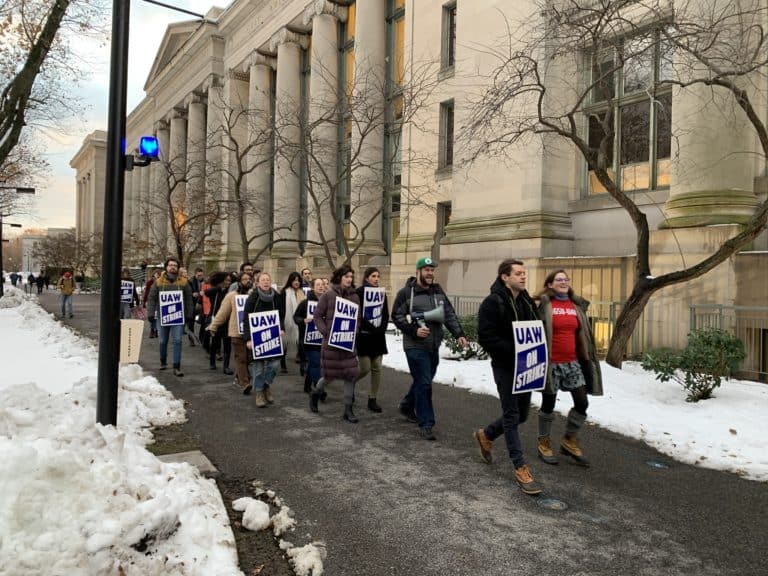Jack Goldsmith is the Learned Hand Professor of Law at Harvard Law School, where he teaches and writes about national security law, international law, internet law, and, recently, labor history. Before coming to Harvard, Professor Goldsmith served as Assistant Attorney General, Office of Legal Counsel from 2003-2004, and Special Counsel to the Department of Defense from 2002-2003.
Earlier this year, labor historian Melvyn Dubofsky gave a very pessimistic assessment of the prospects for the American labor movement. “Given the current alignment of forces domestically and globally,” he concluded, “I find it hard to conceive of any tactics or broader strategy through which the labor movement might re-establish its former size, place, and power.” Rick Yeselson has written an implicit response. He proposes a “Fortress Unionism” strategy during the period of labor’s stasis and decline, a period he thinks will end only when “the workers themselves militantly signal that they want unions.” Fortress Unionism has five tenets: (1) Defend the remaining high-density regions, sectors, and companies; (2) Strengthen existing union locals; (3) Ask one key question about organizing drives: Will they increase the density or power of existing strongholds?; (4) Sustain coalition work with other progressive organizations; (5) Invest heavily in alt-labor organizations, especially Working America.
With the possible exception of (5), Fortress Unionism seems like a defeatist strategy that will worsen’s labor’s plight. Jimmy Hoffa would have agreed with Yeselson’s commentator Cato Uticensis: “the answer to ‘what is to be done’ is the same as it ever was: organize and fight.” But perhaps a better (though not a complete) answer for the modern labor movement is provided in the comments by Jefferson Cowie, author of the great 1970s labor history, Stayin’ Alive, who said: “As for the future, one word: immigrants.”






Daily News & Commentary
Start your day with our roundup of the latest labor developments. See all
November 27
Amazon wins preliminarily injunction against New York’s private sector bargaining law; ALJs resume decisions; and the CFPB intends to make unilateral changes without bargaining.
November 26
In today’s news and commentary, NLRB lawyers urge the 3rd Circuit to follow recent district court cases that declined to enjoin Board proceedings; the percentage of unemployed Americans with a college degree reaches its highest level since tracking began in 1992; and a member of the House proposes a bill that would require secret ballot […]
November 25
In today’s news and commentary, OSHA fines Taylor Foods, Santa Fe raises their living wage, and a date is set for a Senate committee to consider Trump’s NLRB nominee. OSHA has issued an approximately $1.1 million dollar fine to Taylor Farms New Jersey, a subsidiary of Taylor Fresh Foods, after identifying repeated and serious safety […]
November 24
Labor leaders criticize tariffs; White House cancels jobs report; and student organizers launch chaperone program for noncitizens.
November 23
Workers at the Southeastern Pennsylvania Transportation Authority vote to authorize a strike; Washington State legislators consider a bill empowering public employees to bargain over workplace AI implementation; and University of California workers engage in a two-day strike.
November 21
The “Big Three” record labels make a deal with an AI music streaming startup; 30 stores join the now week-old Starbucks Workers United strike; and the Mine Safety and Health Administration draws scrutiny over a recent worker death.